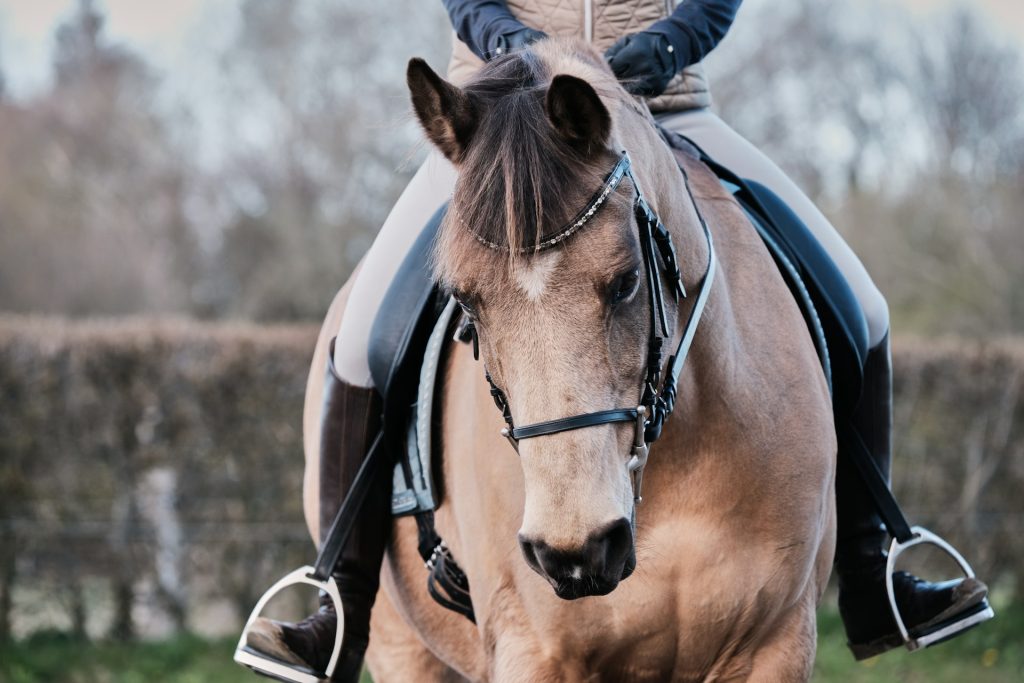Hey there, horse enthusiasts! Ever wondered about the different paths you can take in the world of horse riding? It’s a pretty vast landscape, with each discipline offering its own unique challenges and rewards. Let’s saddle up and explore some popular horse riding disciplines together!
Dressage: The Art of Precision
Dressage is often described as ballet for horses. It’s all about precision, harmony, and communication between horse and rider. Imagine a perfectly synchronized dance – that’s dressage! Riders guide their horses through a series of movements, demonstrating the horse’s training and obedience.
From Training Level to Grand Prix, dressage competitions are structured into levels, each increasing in difficulty. The training involves developing the horse’s strength, flexibility, and responsiveness. For example, a Training Level test might include simple walk-trot transitions, while a Grand Prix test features complex movements like piaffe and passage. If you appreciate the beauty of precise movements and enjoy building a deep connection with your horse, dressage might just be your perfect match. Considering the commitment to your horse’s well-being is paramount; understanding daily horse care practices is crucial to ensure they’re in peak condition for training and competition. Modern dressage also integrates sports psychology for riders to manage performance anxiety and enhance focus, proving it’s as much a mental game as it is physical.
Show Jumping: Thrills and Agility
If you’re an adrenaline junkie, show jumping might be right up your alley! This discipline is all about speed, accuracy, and the thrill of clearing obstacles. Riders and horses navigate a course of jumps, testing their agility and partnership. The goal? To complete the course cleanly and quickly.
Show jumping courses vary in height and complexity, with different types of jumps like verticals, oxers, and combinations. A vertical is a straightforward single jump, while an oxer is wider, testing the horse’s scope and power. Combinations, like a double or triple, require precise striding and quick thinking. It requires a brave horse and a confident rider. Show jumping is a fantastic way to test your skills and build a strong bond with your horse. Furthermore, understanding course design is key; experienced riders walk the course beforehand to plan the best approach to each jump, considering factors like stride length and angle of approach. Moreover, the equestrian world is more than just riding; it’s a community. If you want to expand your network, read more about building your equestrian community and making new friends.
Eventing: The Ultimate Test
Eventing, often called the “equestrian triathlon,” combines dressage, show jumping, and cross-country. It’s the ultimate test of a horse and rider’s versatility and endurance. Over several days, competitors tackle each discipline, showcasing their skills in different areas.
Cross-country is perhaps the most exciting phase, involving galloping across open fields and jumping over natural obstacles. These obstacles can include logs, water jumps, and ditches, each designed to test the horse’s bravery and athleticism. Eventing demands a well-rounded horse and a brave, skilled rider. For instance, a horse might excel in dressage but need additional training for the stamina required in cross-country. It’s challenging, rewarding, and definitely not for the faint of heart! Recent trends in eventing focus on improving safety standards, such as frangible pins on jumps that collapse under excessive force, reducing the risk of rotational falls. For those looking to fully embrace the equestrian lifestyle , understanding and appreciating all disciplines can enrich your experience.
Western Riding: A Different Style
Let’s mosey on over to Western riding, a discipline rooted in the traditions of working cowboys. Western riding focuses on horsemanship and cattle work. Think of it as a more relaxed, practical style of riding.
Western disciplines include activities like reining, trail riding, and cutting. Reining involves guiding the horse through a pattern of maneuvers, while cutting showcases the horse’s ability to separate cattle from the herd. In reining, the horse performs sliding stops, spins, and rollbacks with minimal guidance from the rider. Cutting requires the horse to display agility and cow sense, 능숙하게 outmaneuvering the cattle. Western riding emphasizes a comfortable, responsive partnership between horse and rider. Each one requires a specific set of skills and the right tack. Moreover, the tack used in Western riding, such as the Western saddle and bridle, is designed for comfort and functionality during long hours in the saddle. Modern western riding also sees increased emphasis on horsemanship clinics and training programs that promote gentle and effective training methods.
Other Notable Disciplines
Beyond the main disciplines, there are several other exciting areas to explore:
- Endurance Riding: A test of stamina where horses and riders complete long-distance races, often over challenging terrain.
- Vaulting: Gymnastics on horseback, requiring strength, balance, and teamwork.
- Polo: A fast-paced team sport played on horseback, combining horsemanship with ball-handling skills.
- Driving: Controlling a horse-drawn carriage or wagon, showcasing precision and communication.
Conclusion
So, there you have it – a glimpse into the diverse world of horse riding disciplines. Whether you’re drawn to the precision of dressage, the thrill of show jumping, the challenge of eventing, or the relaxed style of Western riding, there’s a discipline out there for everyone. Why not explore them further and find the perfect match for your riding style and goals? Happy riding!

